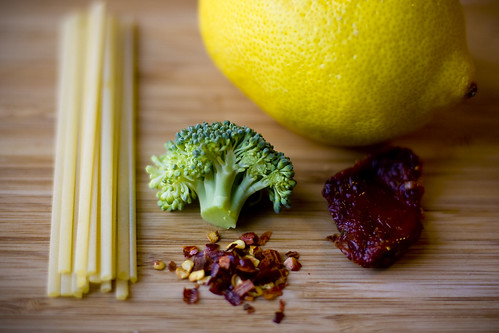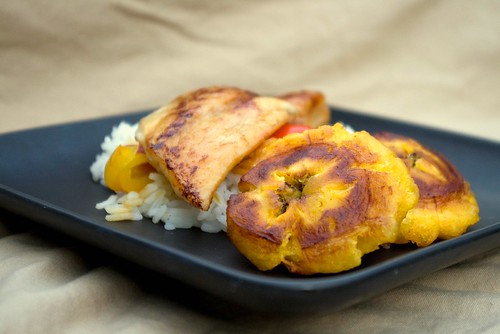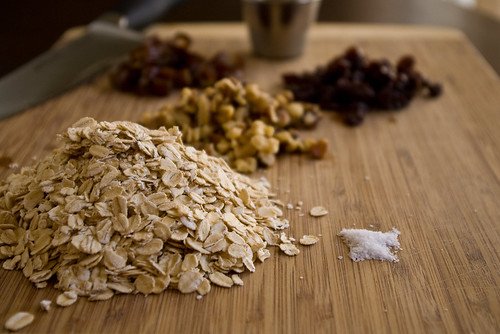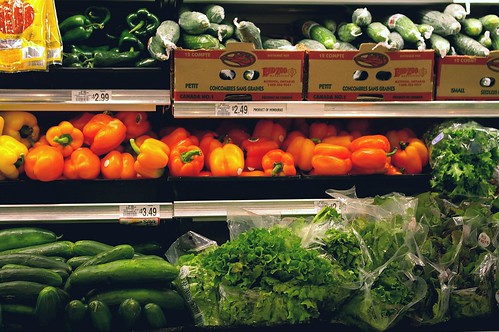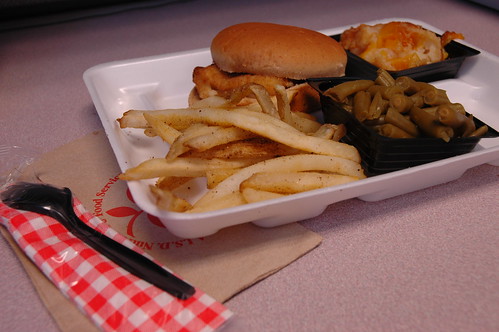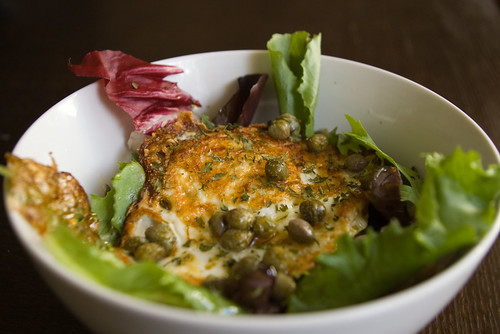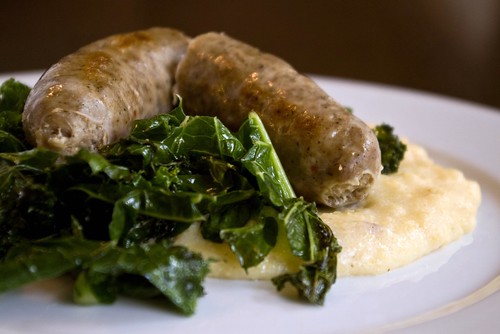
Several days ago I bought some Cajun sausage. I wasn't thinking about it. In fact, I planned to get a pork tenderloin for roasting, but the sausage was there, all fatty and delicious, and I suffered some kind of pork fugue. I snapped back to reality, sausage in my cart, blinking in the produce section's harsh flourescent lights. I brought the sausage home, stashed it in the back of the fridge, and promptly forgot about it. I never did get that pork tenderloin.
After a stressful week, I was desperate to cook this weekend. Just me, The Walkmen, and my stove. As I sorted through the fridge, I found the sausage. When I checked the date, I knew I'd have to use it for something. It wasn't going to last much longer. I checked with the family and learned my wife and daugther don't much care for red beans and rice or gumbo or jambalaya. What else do you make with Cajun sausage?. I was kind of stuck. I portioned up some of the sausage and used it for my own personal red beans and rice (delicious, thanks), and then set about to cook the remaining links. Pretty standard: place the links in a skillet with enough water to cover them half-way, bring to a boil, cover, reduce heat to medium-low, and let simmer for 15-20 minutes. Drain off the water, toss the links back in the pan, bring the heat up to medium-high and cook an additional 5 minutes, turning often. Once that's done, I wrapped the sausages in foil to keep them warm.
Thinking about flavors is the part of cooking I love most. There I was, cooked sausage links on hand wondering what to do with them. The meat wasn't really andouelle, but it did have some nice spice to it. I looked for balancing flavors, found the bitter kale in the crisper, the salty bacon in the cheese drawer, and the sweet maple syrup in the pantry. Real maple syrup, not that garbage that's made by adding maple flavoring to high fructose corn syrup. Also in the pantry I found polenta, which I quickly dubbed grits and was happy.
Southern-style sausage with kale and maple bacon polenta
Ingredients (for two)
- 2 strips of high-quality bacon (there's a difference)
- 2 large handfuls of kale or other greens
- 2 sausage links (prepared as above)
- Polenta (approx. 2/3 cups, total) You can use grits--they're nearly the same
- Polenta is made with yellow corn, grits with white
- Equal parts milk and water (approx. 2 cups, total)
- kosher salt
- 1 tablespoon butter
- 1 tablespoon maple syrup
1. Start by rendering the bacon fat. To do so, set the bacon strips in a nice-sized skillet (one with a lid or other cover) and turn the burner on medium. Leave the bacon alone and let it come up to heat with the pan.
2. While the bacon heats, start in on the polenta. Mix the water and milk in a medium sauce pan. Add the butter and a good-sized dash of salt. Turn the burner up to medium-high and wait.
3. Check on that bacon. If it's beginning to sizzle, go ahead and flip it. Let it sit almost two minutes on that side, then flip it back over; let it sizzle away about another minute, then bring it off the heat and allow it to drain on some paper towels.
4. Toss the handfuls of kale into the bacon pan. The greens will sizzle and pop, and that's ok. Go ahead and give them a stir in the bacon fat, lower the heat to medium-low and cover the skillet.
5. Back over at your sauce pan, your milk and water mixture will probably be coming to a boil. Reduce the heat to medium and begin whisking in your polenta. It should begin to come together pretty quickly. If it seems too runny after a couple minutes of stirring, whisk in some more polenta. If it seems too thick, add some water, milk or even a little cream. You'll want a texture smooth enough to spread on a plate but thick enough to hold its shape. When you get that consistency, reduce to low heat and cover. You'll let this sit about 8 minutes.
6. Stir your kale. When it's just wilted, remove it from the heat, but don't take it out of the pan. It can sit and steam all on its own.
7. Now, crumble the bacon and stir it into the polenta. Give it a taste, add necessary seasoning, then slowly add the maple syrup. You'll be surprised how flavorful the real stuff is, so add a few drops at a time and taste, taste, taste! When you have a good mix of salty and sweet, you're all set.
To plate, spread the polenta first, add the kale, and then nestle the sausage link right on top. To add a fragrant garnish, place a whispy sprig of rosemary on top of everything.
Each bite of the spicy sausage in this rustic, hearty dish blends with the grassy, slightly bitter kale and the wonderfully silky, salty, sweet polenta to delight all tastebuds.

 Why do you think involving children in growing food and preparing it can make such a big difference for kids?
Why do you think involving children in growing food and preparing it can make such a big difference for kids? My solution is not to try to feed children in the same way that fast food nation does — which is to figure out a gimmick to get them to eat something. It’s to bring them into a whole relationship with food that’s connected to nature and our culture.
My solution is not to try to feed children in the same way that fast food nation does — which is to figure out a gimmick to get them to eat something. It’s to bring them into a whole relationship with food that’s connected to nature and our culture.
